Analysis of CSR Articles in Accounting Theory and Current Issues
VerifiedAdded on 2023/06/05
|10
|745
|311
Report
AI Summary
This report analyzes two articles on Corporate Social Responsibility (CSR). The first article, "CSR disclosure: the more things change…?" examines changes in CSR disclosure requirements and its benefits for stakeholders. The second article, "Descriptive, instrumental and strategic approaches to corporate social responsibility," explores how companies adopt different methods to achieve CSR objectives. The report highlights the similarities and differences between the articles, emphasizing the importance of CSR in accounting disclosures and its implications for accountants and accounting regulators in Australian companies. It also discusses the evolution of CSR requirements since the 1970s and the strategic, instrumental, and descriptive methods companies use to attain CSR benefits.
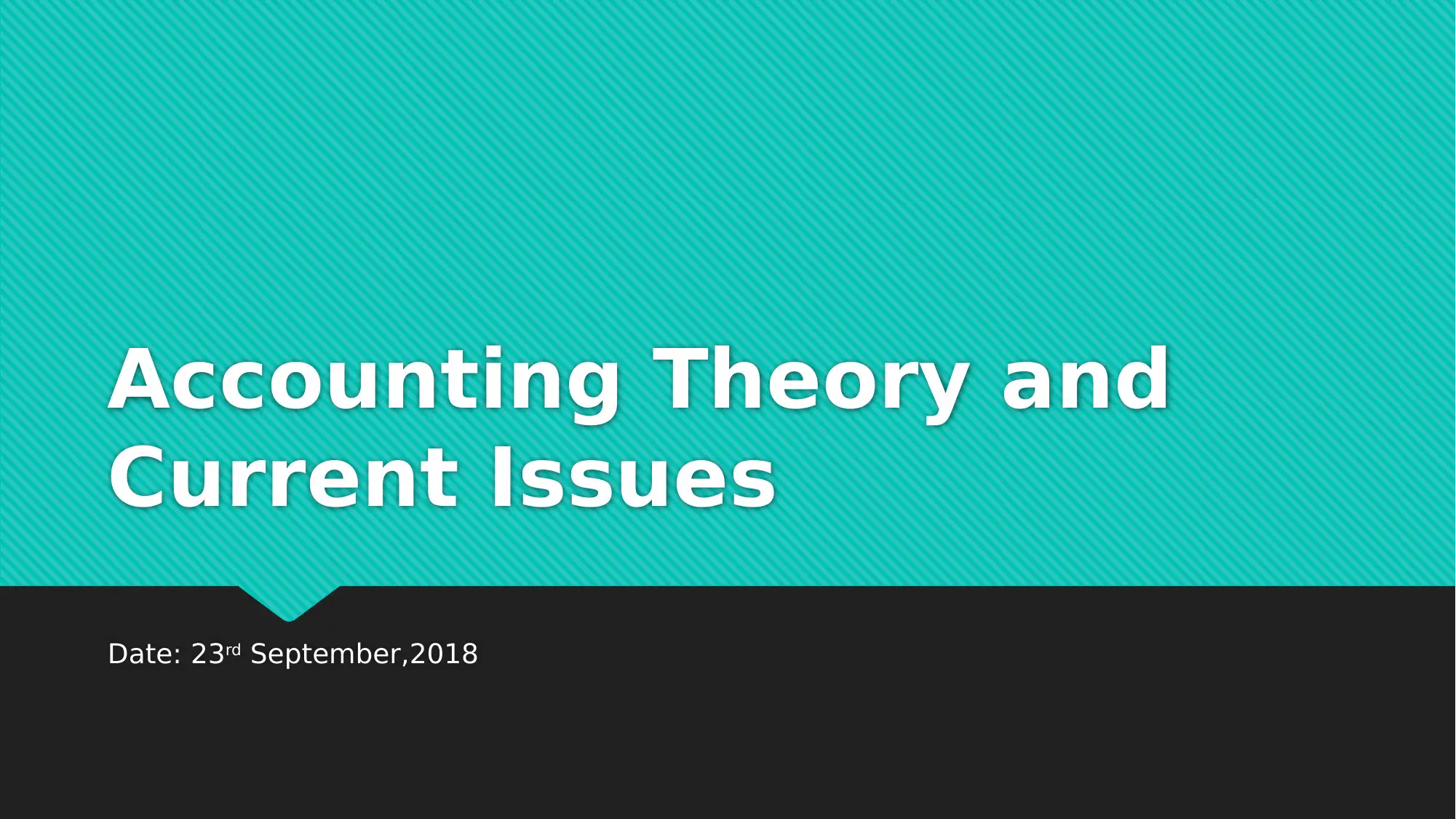
Accounting Theory and
Current Issues
Date: 23rd September,2018
Current Issues
Date: 23rd September,2018
Paraphrase This Document
Need a fresh take? Get an instant paraphrase of this document with our AI Paraphraser
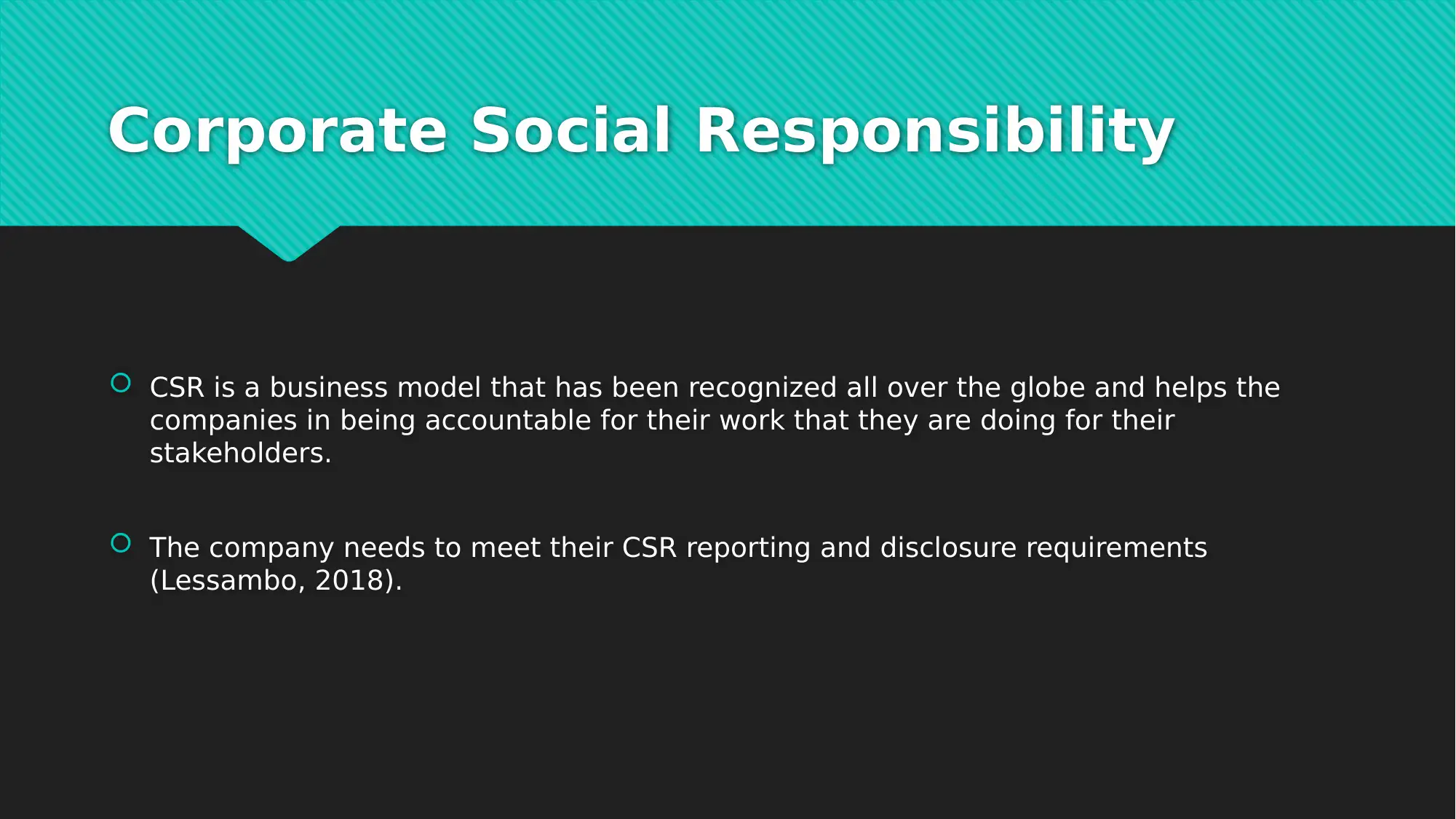
Corporate Social Responsibility
CSR is a business model that has been recognized all over the globe and helps the
companies in being accountable for their work that they are doing for their
stakeholders.
The company needs to meet their CSR reporting and disclosure requirements
(Lessambo, 2018).
CSR is a business model that has been recognized all over the globe and helps the
companies in being accountable for their work that they are doing for their
stakeholders.
The company needs to meet their CSR reporting and disclosure requirements
(Lessambo, 2018).

Article 1
The first article is “CSR disclosure: the more things change…?”
It highlights the overall changes that have occurred in the disclosure requirements of
CSR since prior years.
It also highlights how stakeholders can benefit from CSR disclosures in the annual
report of the company (Charles H, et al., 2015).
The first article is “CSR disclosure: the more things change…?”
It highlights the overall changes that have occurred in the disclosure requirements of
CSR since prior years.
It also highlights how stakeholders can benefit from CSR disclosures in the annual
report of the company (Charles H, et al., 2015).
⊘ This is a preview!⊘
Do you want full access?
Subscribe today to unlock all pages.

Trusted by 1+ million students worldwide
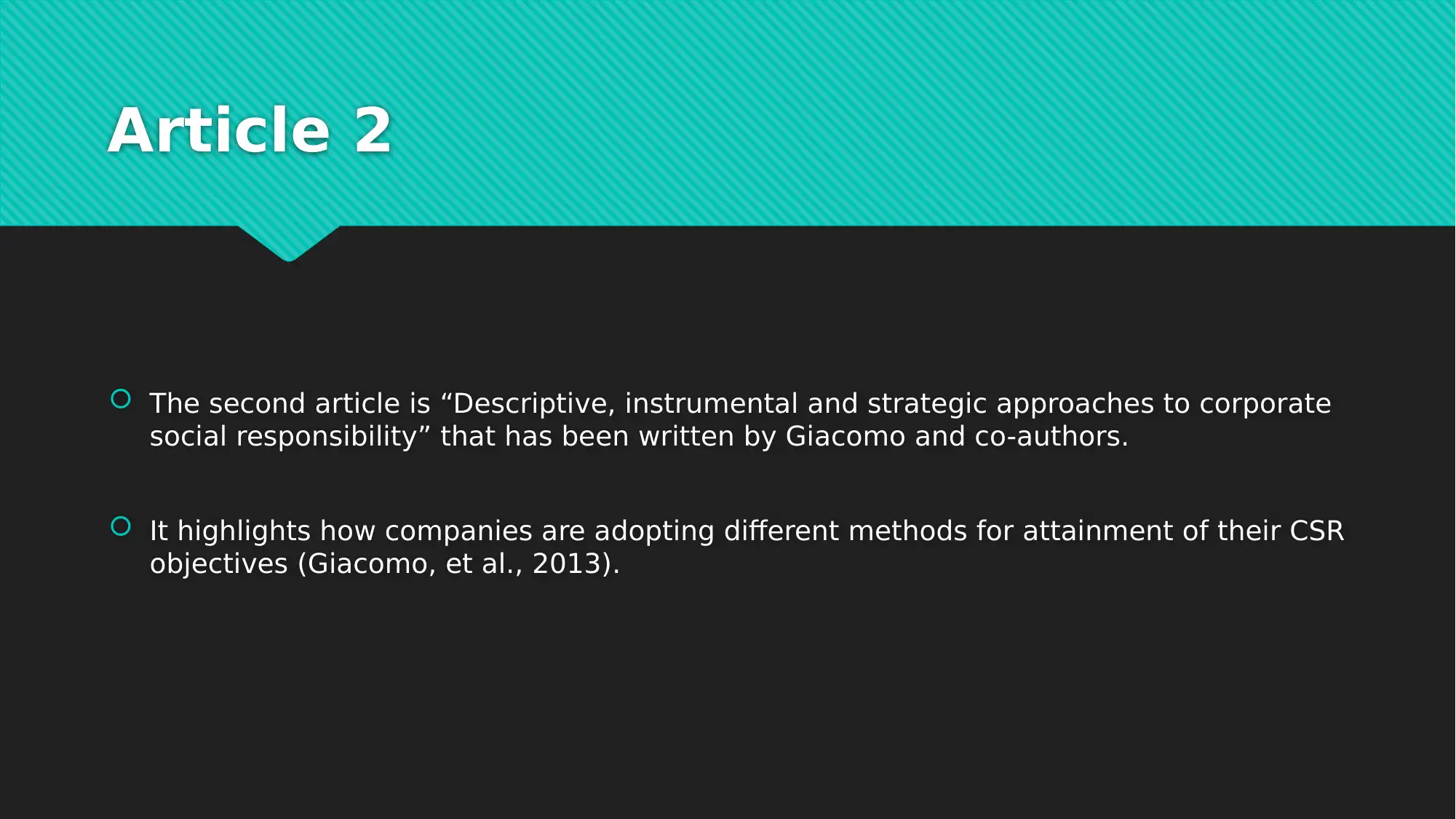
Article 2
The second article is “Descriptive, instrumental and strategic approaches to corporate
social responsibility” that has been written by Giacomo and co-authors.
It highlights how companies are adopting different methods for attainment of their CSR
objectives (Giacomo, et al., 2013).
The second article is “Descriptive, instrumental and strategic approaches to corporate
social responsibility” that has been written by Giacomo and co-authors.
It highlights how companies are adopting different methods for attainment of their CSR
objectives (Giacomo, et al., 2013).
Paraphrase This Document
Need a fresh take? Get an instant paraphrase of this document with our AI Paraphraser
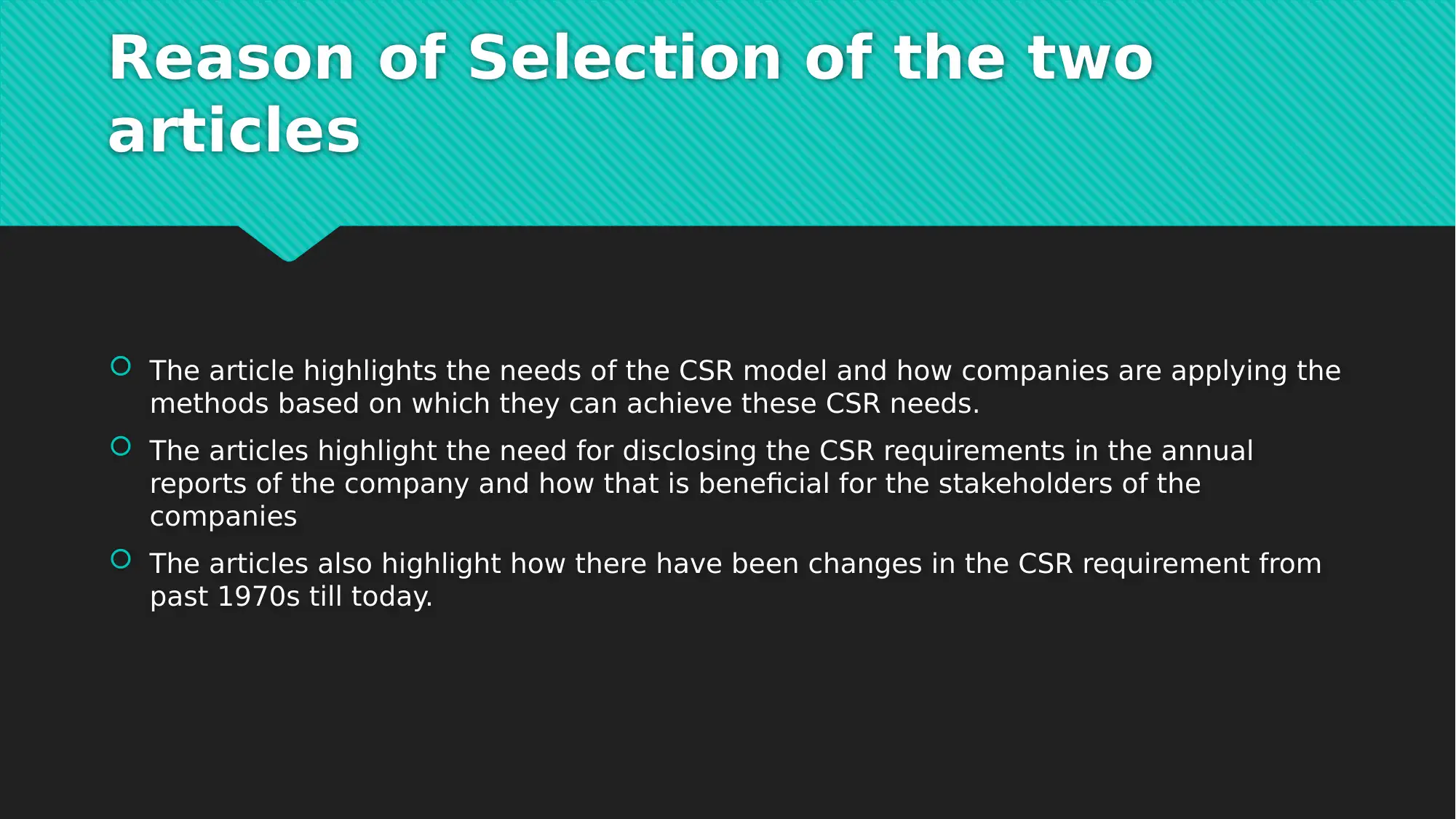
Reason of Selection of the two
articles
The article highlights the needs of the CSR model and how companies are applying the
methods based on which they can achieve these CSR needs.
The articles highlight the need for disclosing the CSR requirements in the annual
reports of the company and how that is beneficial for the stakeholders of the
companies
The articles also highlight how there have been changes in the CSR requirement from
past 1970s till today.
articles
The article highlights the needs of the CSR model and how companies are applying the
methods based on which they can achieve these CSR needs.
The articles highlight the need for disclosing the CSR requirements in the annual
reports of the company and how that is beneficial for the stakeholders of the
companies
The articles also highlight how there have been changes in the CSR requirement from
past 1970s till today.
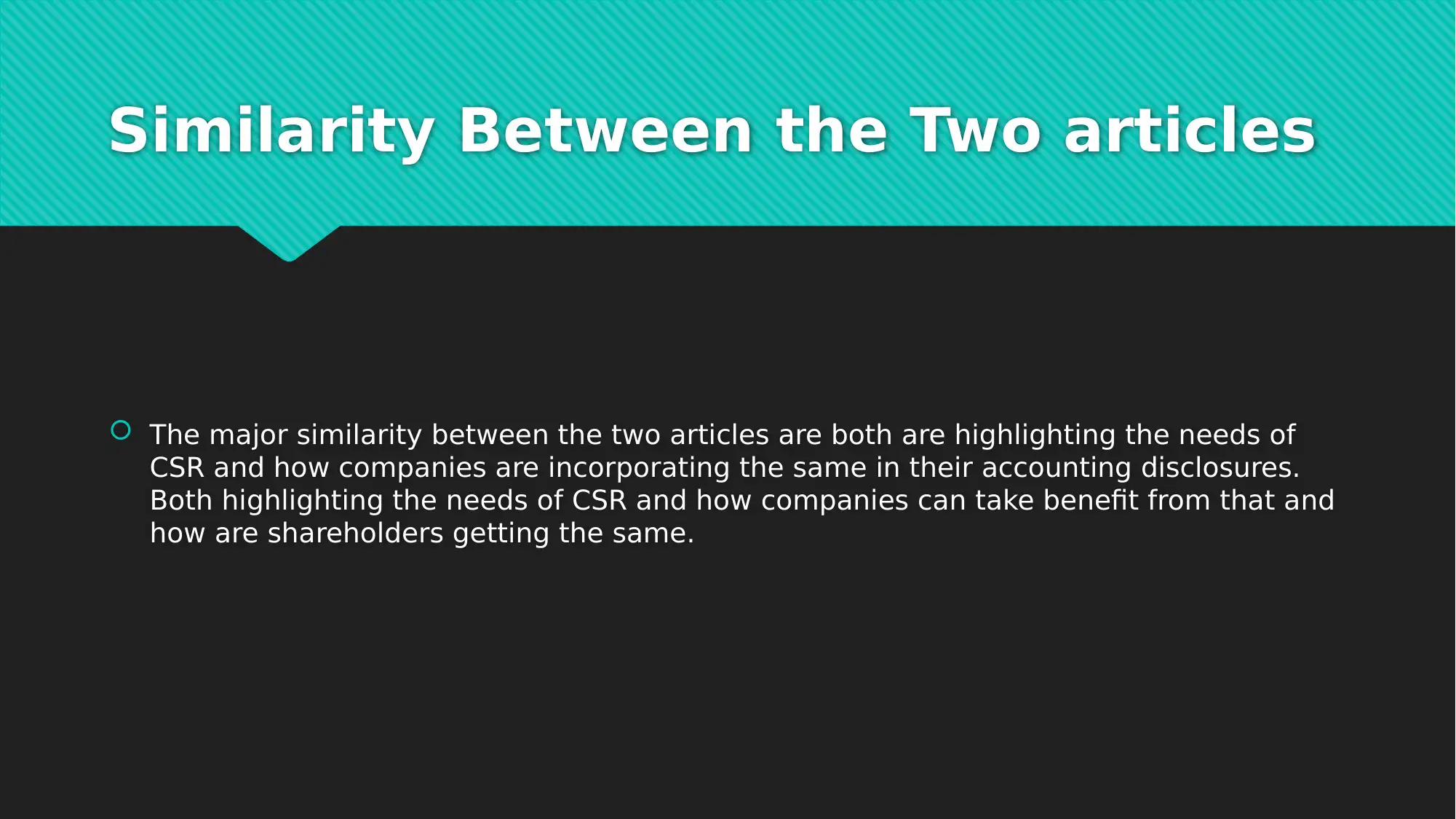
Similarity Between the Two articles
The major similarity between the two articles are both are highlighting the needs of
CSR and how companies are incorporating the same in their accounting disclosures.
Both highlighting the needs of CSR and how companies can take benefit from that and
how are shareholders getting the same.
The major similarity between the two articles are both are highlighting the needs of
CSR and how companies are incorporating the same in their accounting disclosures.
Both highlighting the needs of CSR and how companies can take benefit from that and
how are shareholders getting the same.
⊘ This is a preview!⊘
Do you want full access?
Subscribe today to unlock all pages.

Trusted by 1+ million students worldwide
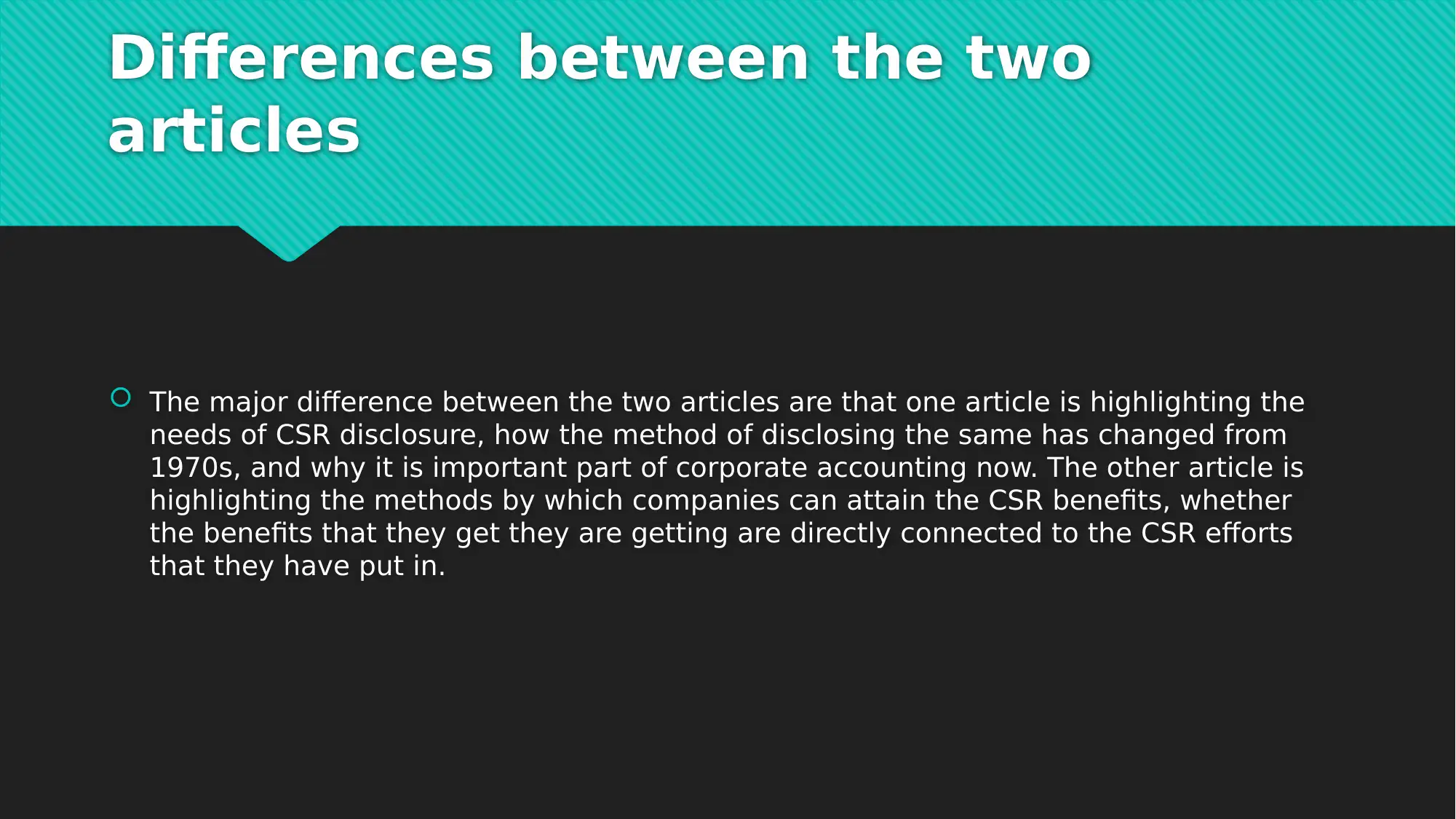
Differences between the two
articles
The major difference between the two articles are that one article is highlighting the
needs of CSR disclosure, how the method of disclosing the same has changed from
1970s, and why it is important part of corporate accounting now. The other article is
highlighting the methods by which companies can attain the CSR benefits, whether
the benefits that they get they are getting are directly connected to the CSR efforts
that they have put in.
articles
The major difference between the two articles are that one article is highlighting the
needs of CSR disclosure, how the method of disclosing the same has changed from
1970s, and why it is important part of corporate accounting now. The other article is
highlighting the methods by which companies can attain the CSR benefits, whether
the benefits that they get they are getting are directly connected to the CSR efforts
that they have put in.
Paraphrase This Document
Need a fresh take? Get an instant paraphrase of this document with our AI Paraphraser
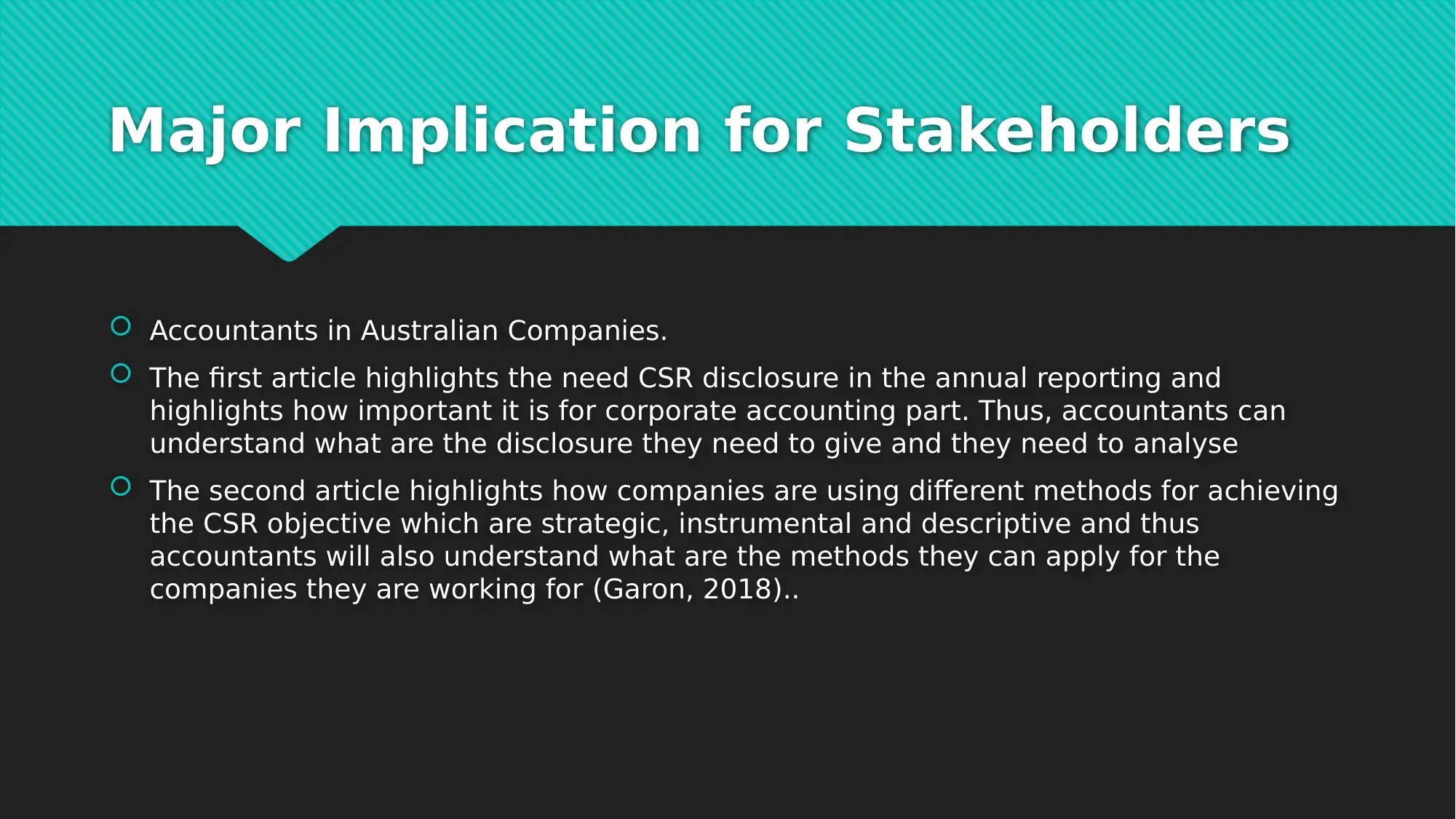
Major Implication for Stakeholders
Accountants in Australian Companies.
The first article highlights the need CSR disclosure in the annual reporting and
highlights how important it is for corporate accounting part. Thus, accountants can
understand what are the disclosure they need to give and they need to analyse
The second article highlights how companies are using different methods for achieving
the CSR objective which are strategic, instrumental and descriptive and thus
accountants will also understand what are the methods they can apply for the
companies they are working for (Garon, 2018)..
Accountants in Australian Companies.
The first article highlights the need CSR disclosure in the annual reporting and
highlights how important it is for corporate accounting part. Thus, accountants can
understand what are the disclosure they need to give and they need to analyse
The second article highlights how companies are using different methods for achieving
the CSR objective which are strategic, instrumental and descriptive and thus
accountants will also understand what are the methods they can apply for the
companies they are working for (Garon, 2018)..

Major Implication for Stakeholders
Accounting Regulators.
The second article is highlighting the methods that various companies uses and is
relating the accounting benefits with the accounting methods. The first article is
highlighting how the disclosing policies have changed over the years since 1970s and
thus would also be beneficial for the accounts regulators (Kangarluie & Aalizadeh,
2017).
Accounting Regulators.
The second article is highlighting the methods that various companies uses and is
relating the accounting benefits with the accounting methods. The first article is
highlighting how the disclosing policies have changed over the years since 1970s and
thus would also be beneficial for the accounts regulators (Kangarluie & Aalizadeh,
2017).
⊘ This is a preview!⊘
Do you want full access?
Subscribe today to unlock all pages.

Trusted by 1+ million students worldwide
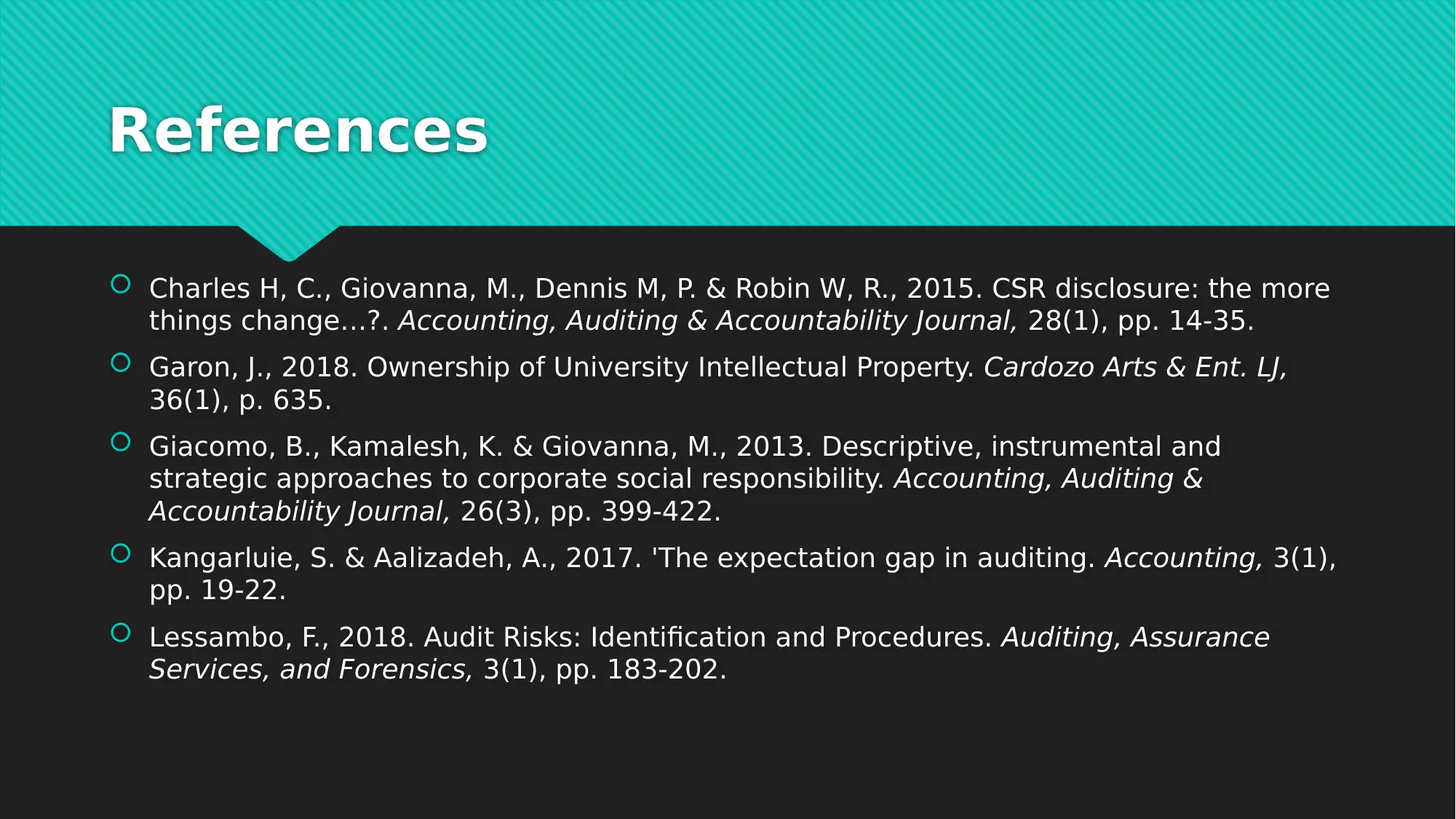
References
Charles H, C., Giovanna, M., Dennis M, P. & Robin W, R., 2015. CSR disclosure: the more
things change…?. Accounting, Auditing & Accountability Journal, 28(1), pp. 14-35.
Garon, J., 2018. Ownership of University Intellectual Property. Cardozo Arts & Ent. LJ,
36(1), p. 635.
Giacomo, B., Kamalesh, K. & Giovanna, M., 2013. Descriptive, instrumental and
strategic approaches to corporate social responsibility. Accounting, Auditing &
Accountability Journal, 26(3), pp. 399-422.
Kangarluie, S. & Aalizadeh, A., 2017. 'The expectation gap in auditing. Accounting, 3(1),
pp. 19-22.
Lessambo, F., 2018. Audit Risks: Identification and Procedures. Auditing, Assurance
Services, and Forensics, 3(1), pp. 183-202.
Charles H, C., Giovanna, M., Dennis M, P. & Robin W, R., 2015. CSR disclosure: the more
things change…?. Accounting, Auditing & Accountability Journal, 28(1), pp. 14-35.
Garon, J., 2018. Ownership of University Intellectual Property. Cardozo Arts & Ent. LJ,
36(1), p. 635.
Giacomo, B., Kamalesh, K. & Giovanna, M., 2013. Descriptive, instrumental and
strategic approaches to corporate social responsibility. Accounting, Auditing &
Accountability Journal, 26(3), pp. 399-422.
Kangarluie, S. & Aalizadeh, A., 2017. 'The expectation gap in auditing. Accounting, 3(1),
pp. 19-22.
Lessambo, F., 2018. Audit Risks: Identification and Procedures. Auditing, Assurance
Services, and Forensics, 3(1), pp. 183-202.
1 out of 10
Related Documents
Your All-in-One AI-Powered Toolkit for Academic Success.
+13062052269
info@desklib.com
Available 24*7 on WhatsApp / Email
![[object Object]](/_next/static/media/star-bottom.7253800d.svg)
Unlock your academic potential
Copyright © 2020–2025 A2Z Services. All Rights Reserved. Developed and managed by ZUCOL.





